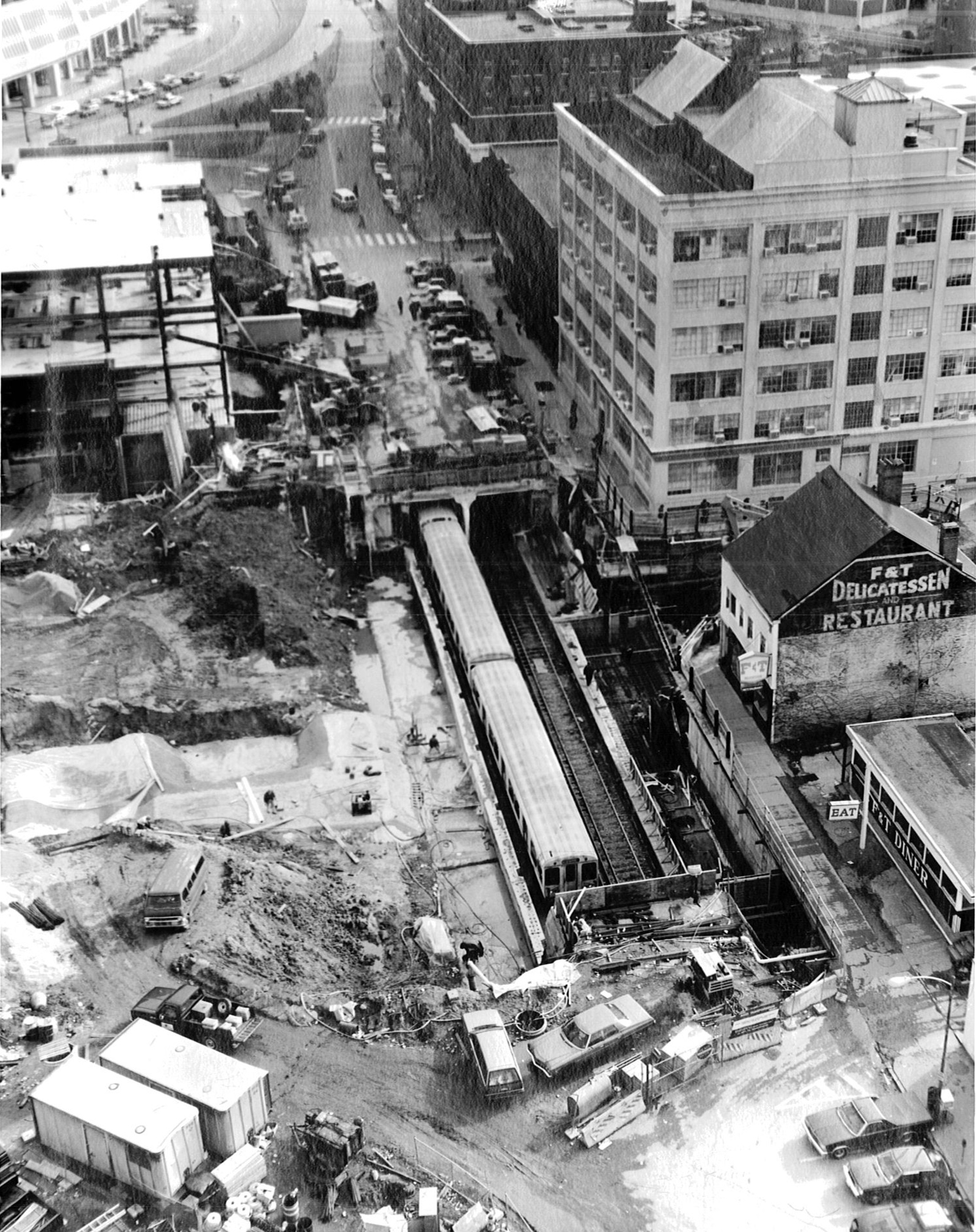
The fabled F&T Restaurant—which attracted a diverse mix of Cambridge locals and MIT students and faculty—was a Kendall Square landmark from the 1920s to the 1980s, when it was demolished. Courtesy of the Cambridge Historical Commission.
Add to that the ongoing controversy in Cambridge over the use of recombinant DNA (rDNA)—which had some city officials calling for an outright ban on genetic research—and Kendall seemed like an unlikely place to launch a biotech revolution in the next decade.
But the neighborhood had one thing going for it: people. More specifically, proximity to the right people, says Robin Wolfe Scheffler, the Leo Marx Career Development Professor in the History and Culture of Science and Technology at MIT. To a greater extent than the more established electronics industry, Scheffler says, biotech required a highly specialized researcher, with a PhD in molecular biology and probably a postdoc as well. “That’s the kind of expertise that only a few hundred people initially had.” With the uncertainty over whether the industry would take off, they wanted to stay close to their academic lab connections at MIT or Harvard, pulling companies such as Biogen to Kendall Square.
These dynamics are at the center of Scheffler’s current research on the early history of biotech, which he is pursuing with support from the 2018 James A. (1945) and Ruth Levitan Prize in the Humanities. “It’s fascinating that these factors of lifestyle and academic stability combine to counterbalance all of the other reasons why a biotech company might want to go as far as possible away from Cambridge,” says Scheffler. “It makes it much more complicated than a simple economic analysis would suggest.” Even apparent weaknesses eventually became strengths: Kendall’s abandoned industrial infrastructure provided ample room for expanding companies, and the eventual rDNA regulations gave predictability to companies in their relationship with local government, says Scheffler.
By the time big drug companies began moving into Kendall in the late 1990s, its status as a biotech hub was assured.
For his project, Scheffler is plumbing unusual sources to uncover Kendall’s past, for example, examining sewer records from the Cambridge Public Health Commission to learn about how early labs were set up. He is also making ample use of MIT’s Recombinant DNA History Collection, which contains oral histories from the time, and hopes to add to MIT’s archives with oral histories of his own—from not just top-name scientists in biotech, but also support staff who were crucial to the field’s success. His goal is to understand how seemingly small decisions by individuals tipped the scales for an underdog neighborhood like Kendall Square.
“It’s a snowball effect,” Scheffler says. “The initial differences may not have been great, but by the time the process has developed over a generation, they become immense, and a sort of inevitability builds. I am interested in unpacking how that set of advantages develops over time.”